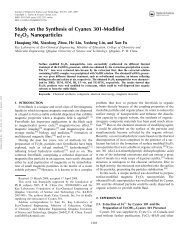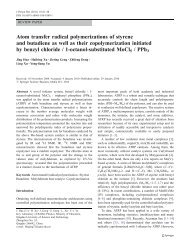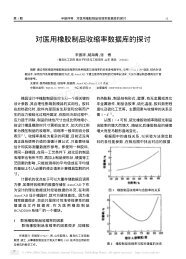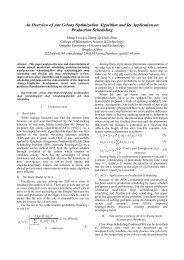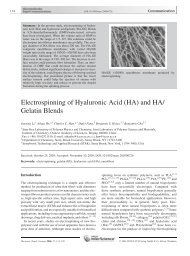Gauss Lemma and Law of Quadratic Reciprocity
Gauss Lemma and Law of Quadratic Reciprocity
Gauss Lemma and Law of Quadratic Reciprocity
You also want an ePaper? Increase the reach of your titles
YUMPU automatically turns print PDFs into web optimized ePapers that Google loves.
gauss lemma <strong>and</strong> law <strong>of</strong> quadratic reciprocity 25(15) Suppose p > 2 <strong>and</strong> a gcd p = 1 <strong>and</strong> a is quadratic residue mod p. Thenthere exist integers x, y such that (x 2 −a)modp = 0 <strong>and</strong> (y 2 −a)modp = 0<strong>and</strong> x ≢ y(mod p).Let f 1 be a finite sequence <strong>of</strong> elements <strong>of</strong> N <strong>and</strong> let us consider d. Note thatf 1 (d) is natural.We now state several propositions:(16) Suppose p > 2. Then there exists a finite sequence f 1 <strong>of</strong> elements <strong>of</strong> Nsuch that(i) len f 1 = (p − ′ 1) ÷ 2,(ii) for every d such that d ∈ dom f 1 holds gcd(f 1 (d), p) = 1,(iii) for every d such that d ∈ dom f 1 holds f 1 (d) is quadratic residue modp, <strong>and</strong>(iv) for all d, e such that d ∈ dom f 1 <strong>and</strong> e ∈ dom f 1 <strong>and</strong> d ≠ e holdsf 1 (d) ≢ f 1 (e)(mod p).(17) If p > 2 <strong>and</strong> a gcd p = 1 <strong>and</strong> a is quadratic residue mod p, thena (p−′ 1)÷2 mod p = 1.(18) If p > 2 <strong>and</strong> b gcd p = 1 <strong>and</strong> b is not quadratic residue mod p, thenb (p−′ 1)÷2 mod p = p − 1.(19) If p > 2 <strong>and</strong> a gcd p = 1 <strong>and</strong> a is not quadratic residue mod p, thena (p−′ 1)÷2 mod p = p − 1.(20) If p > 2 <strong>and</strong> a gcd p = 1 <strong>and</strong> a is quadratic residue mod p, then(a (p−′ 1)÷2 − 1) mod p = 0.(21) If p > 2 <strong>and</strong> a gcd p = 1 <strong>and</strong> a is not quadratic residue mod p, then(a (p−′ 1)÷2 + 1) mod p = 0.In the sequel b is an integer.One can prove the following propositions:(22) Suppose p > 2 <strong>and</strong> a gcd p = 1 <strong>and</strong> b gcd p = 1 <strong>and</strong> a is quadratic residuemod p <strong>and</strong> b is quadratic residue mod p. Then a · b is quadratic residuemod p.(23) Suppose p > 2 <strong>and</strong> a gcd p = 1 <strong>and</strong> b gcd p = 1 <strong>and</strong> a is quadratic residuemod p <strong>and</strong> b is not quadratic residue mod p. Then a · b is not quadraticresidue mod p.(24) Suppose p > 2 <strong>and</strong> a gcd p = 1 <strong>and</strong> b gcd p = 1 <strong>and</strong> a is not quadraticresidue mod p <strong>and</strong> b is not quadratic residue mod p. Then a·b is quadraticresidue mod p.Let a be an integer <strong>and</strong> let p be a prime number. The functor Lege(a, p)yielding an integer is defined by:(Def. 3)(i) Lege(a, p) = 1 if a is quadratic residue mod p,(ii) Lege(a, p) = −1 if a is not quadratic residue mod p,(iii) a is not quadratic residue mod p, otherwise.





